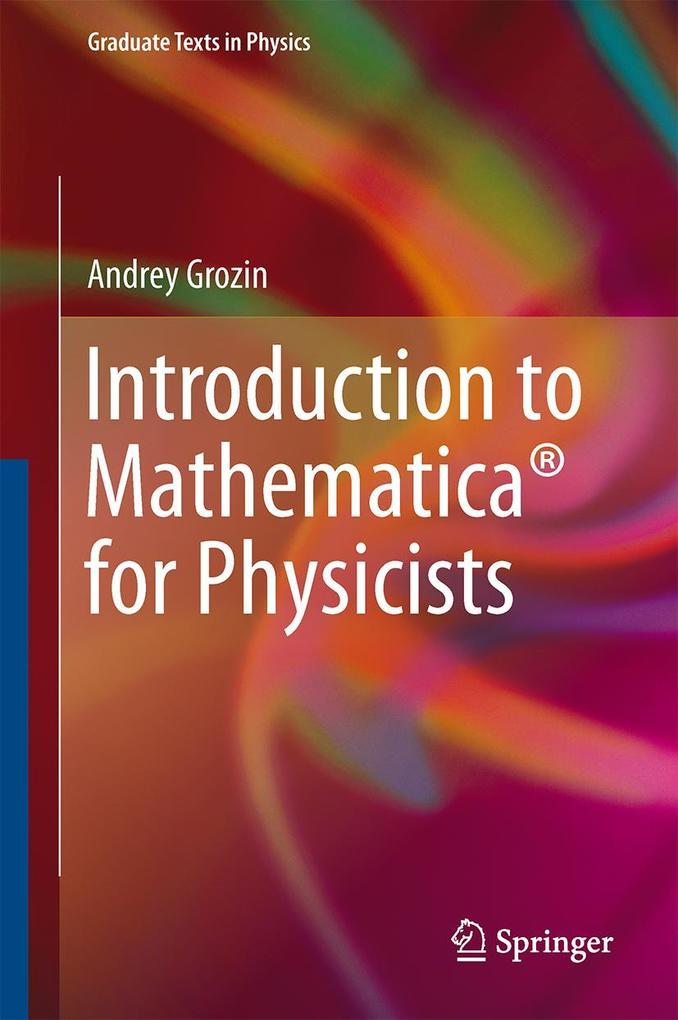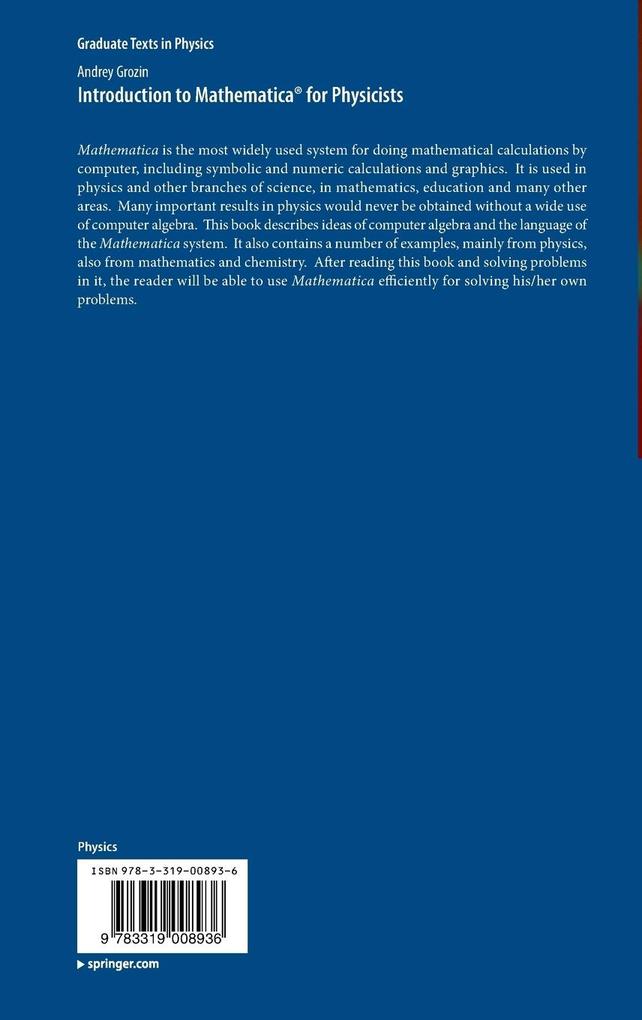
Zustellung: Fr, 18.07. - Di, 22.07.
Versand in 7 Tagen
VersandkostenfreiBestellen & in Filiale abholen:
This book uses examples from physical sciences to illustrate the value of Mathematica. After reading this book and solving problems in it, the reader will be able to use Mathematica efficiently for solving his/her own problems.
The basics of computer algebra and the language of Mathematica are described in this textbook, leading towards an understanding of Mathematica that allows the reader to solve problems in physics, mathematics, and chemistry.
Mathematica is the most widely used system for doing mathematical calculations by computer, including symbolic and numeric calculations and graphics. It is used in physics and other branches of science, in mathematics, education and many other areas.
Mathematica is the most widely used system for doing mathematical calculations by computer, including symbolic and numeric calculations and graphics. It is used in physics and other branches of science, in mathematics, education and many other areas.
Inhaltsverzeichnis
Part I Lectures. - Computer algebra systems. - Overview of Mathematica. - Expressions. -Patterns and substitutions. - Functions. - Mathematica as a programming language. - Gröbner bases. - Calculus. - Risch algorithm. - Linear algebra. - Input--output and strings. - Packages. - Part II Computer classes. - Plots. - Trigonometric functions. - Quantum oscillator. - Spherical harmonics. - Adding angular momenta in quantum mechanics. - Classical nonlinear oscillator. - Cyclohexane. - Multi- functions. - Quantum nonlinear oscillator. - Riemann curvature tensor. - Rainbow. - Problems for students.
Produktdetails
Erscheinungsdatum
09. September 2013
Sprache
englisch
Auflage
2014
Seitenanzahl
232
Reihe
Graduate Texts in Physics
Autor/Autorin
Andrey Grozin
Verlag/Hersteller
Produktart
gebunden
Abbildungen
X, 219 p.
Gewicht
518 g
Größe (L/B/H)
241/160/17 mm
ISBN
9783319008936
Entdecken Sie mehr
Bewertungen
0 Bewertungen
Es wurden noch keine Bewertungen abgegeben. Schreiben Sie die erste Bewertung zu "Introduction to Mathematica® for Physicists" und helfen Sie damit anderen bei der Kaufentscheidung.










